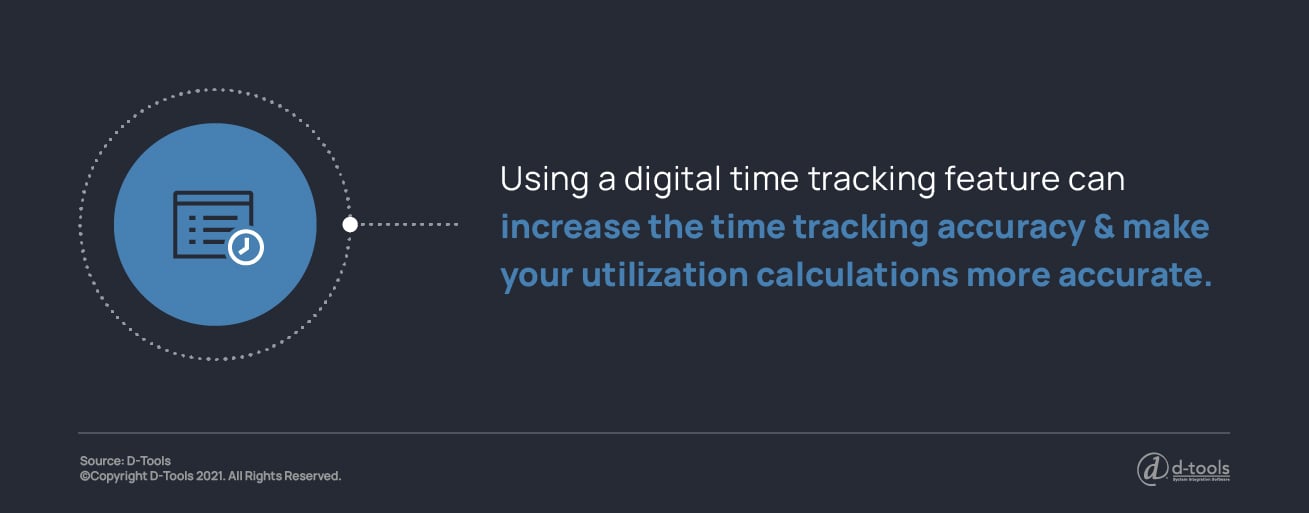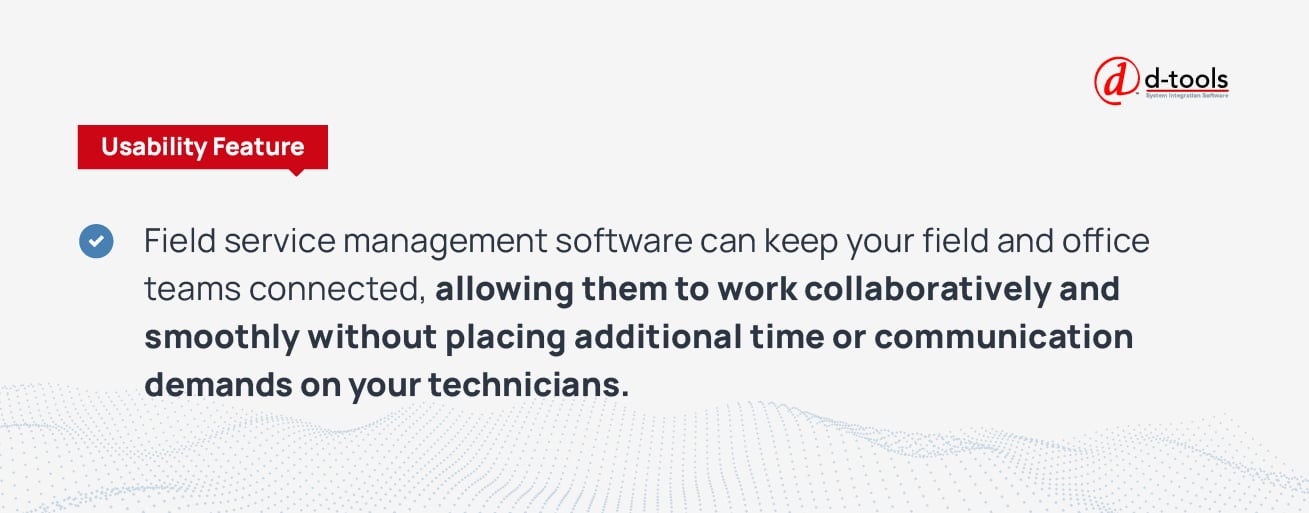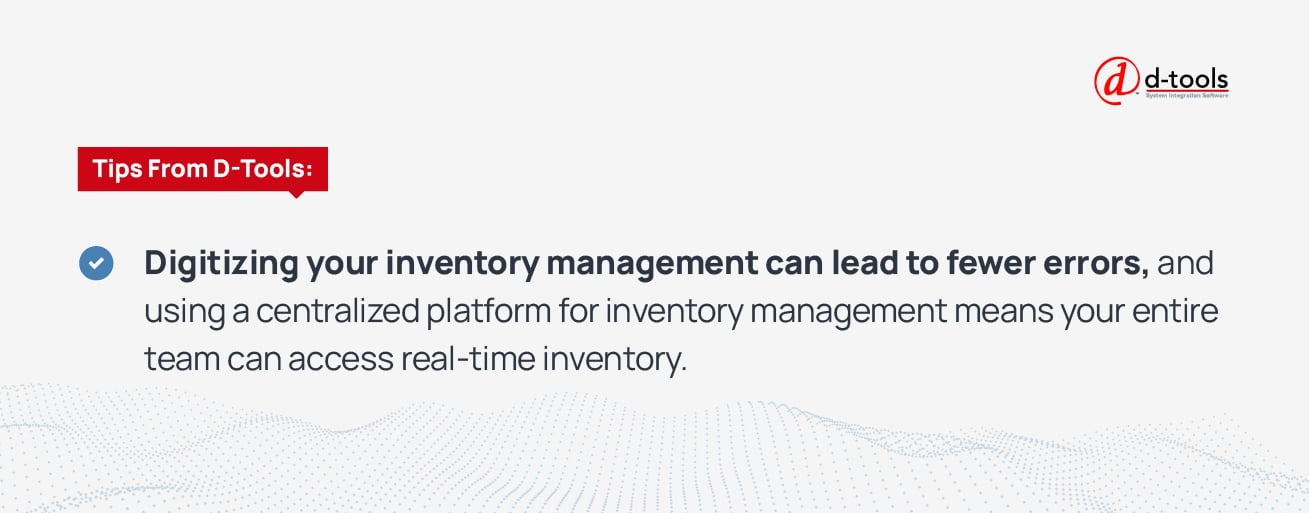Many factors contribute to your field service business’ performance, call response rate, profit margins, and overall customer satisfaction. One of those important factors is your field service technician utilization.
Field service technician utilization refers to the percentage of working hours that a technician spends performing work for a client. These are billable hours where your technicians are bringing in money for your business.
Tracking and improving technician utilization is essential to multiple elements of your business. Increasing your technician utilization means that you can bring in more money per day, and that your business can enjoy higher profits. It also plays a role in your call response time, and the average time it takes you to address and fix issues.
But improving your field service technician utilization isn’t always simple, and you may need to make procedural changes to ensure your technicians are spending maximum time on billable hours. The following tips and information can help you improve not only the performance of your technicians, but that of your business, too.
How to Evaluate Field Service Technician Utilization
Before you focus on improving your technician utilization, you need to understand how to measure and monitor it. The following technician utilization formula can help you to determine your technician utilization.
Technician utilization is calculated by dividing the number of hours billed by the work capacity. You can use this technician productivity formula to evaluate daily utilization, weekly utilization, or even monthly or yearly utilization. You can also apply it to one or multiple technicians.
The formula is relatively simple. First, you’ll need to determine the agent’s billable hours that they spend actively working on a service call in a day, week, or another target period. Be sure to avoid including break time, travel time, and additional time spent on non-billable activities.
Then, divide that number by the total number of hours that your technician could have been performing billable work in that same time period. If you’re calculating utilization during a single workday, then you’d account for your workday length.
Make sure that both figures use the same measurements, whether that’s minutes or hours. The resulting figure will be a percent. The higher the percent, the higher your technician utilization is.

Keep in mind that, to get accurate results using this formula, you need to know precisely how much time your technicians are spending on billable versus non-billable hours. If technicians are tracking their time manually, your data might be error-prone. Using a digital time tracking feature, like those offered by field service management software platforms, can increase the time tracking accuracy and make your utilization calculations more accurate.
Factors That Affect Field Service Technician Utilization
To improve your field service technician utilization, you need to understand the factors that can affect how your technicians use their time each day. Your technicians won’t ever reach 100% utilization, because there are essential daily activities that aren’t billable hours. For example, your technicians likely spend time each day on these non-billable activities:
- Driving to and from service sites
- Filling out paperwork and invoices
- Communicating with your office and checking schedule updates
- Driving to the warehouse to restock their vehicles, or leaving appointments to get parts or pieces of equipment they don’t have on hand
- Making calls to clients or your office to clarify missing or unclear appointment information
As you take steps to maximize utilization, it’s also important to consider the differences between field technician utilization vs. productivity. A technician can be highly productive and focused on their work, delivering prompt fix times and quality work. However, suppose they’re fighting poor scheduling, traffic, inventory management issues, and other challenges. In that case, their utilization rates can still remain low, despite their high amount of productivity when they are actually working on jobs.
The more you can minimize time spent on non-billable activities, the more you can improve technician utilization and even contribute to technician productivity.
The 5 Ways to Improve Field Service Technician Utilization
1. Focus on Efficient Scheduling
Technician utilization starts with appointment scheduling. Strategically scheduling your field service appointments to avoid backtracking, to keep drives between appointments short, and to reduce the chances of your technicians getting caught in traffic means your technicians will spend less time on the road.
But field service scheduling optimization isn’t always easy, especially when you’re managing routes among multiple technicians and are also trying to fit in last-minute appointments. Manually accomplishing this can be challenging and error-prone, but field service management software can make the process easier.
By using software, you can take the guesswork out of scheduling. The software can identify the shortest routes and best way to schedule appointments. Smart route scheduling features can cut down on travel time and even help to keep technicians on schedule.
2. Automate Paperwork and Invoicing
Paperwork is time-consuming, and it can delay a technician from getting on the road to their next appointment. While it’s necessary for technicians to record details about the calls and items used or purchased, the more you can do to streamline this process, the better.
Look for ways to automate your paperwork and streamline data entry. Equipping technicians with tablets that allow them to choose from digitized lists can save time. Try to remove extra responsibilities, like scheduling maintenance appointments or completing invoices, from your technicians’ plates. Software can automatically schedule follow-up or routine maintenance appointments, and as long as your technicians are able to check off the services performed and supplies used, your software or your office team can complete the invoicing process.
3. Streamline Communication
Back-and-forth communication with your office team can quickly eat into a technician’s productivity. While communication is essential, your technicians can’t call or text the office with every update as they arrive at, start, or finish a job.
Instead, you can rely on field service management software to serve as an automated line of communication between your technicians and your office team. Many software platforms are capable of providing your office with real-time updates on each technician’s location. Your teams can see when technicians start and finish each job, so they can better communicate with clients who have appointments later in the day. Your technicians are left to focus on their work, undisturbed.

This communication allows for more flexible, real-time scheduling, and technicians can access those updated, live schedules via their smartphones or other devices. Your software can keep your field and office teams connected, allowing them to work collaboratively and smoothly without placing additional time or communication demands on your technicians.
Field service management technology can also give technicians valuable access to information on a client’s maintenance and service history. With quality technology, your technicians can access these records while they’re in the field. This can better inform the troubleshooting process, helping them work more promptly and eliminating time-consuming calls back to your office.
4. Enhance Inventory Accuracy
Inventory management can be a significant challenge for field service businesses, but inventory management errors can also negatively impact technician utilization. When technicians aren’t aware of what’s on their vehicles versus what’s in the inventory warehouse, they may have to leave appointments to fetch supplies or materials. This extends the time to a fix while also increasing the time a technician spends on the road.

Effective inventory management, especially across multiple vehicles and a warehouse, truly benefits from software use. Digitizing your inventory management can lead to fewer errors, and using a centralized platform for inventory management means your entire team can access real-time inventory. Technicians can see what’s in their vehicles, so they can better plan ahead and ensure that they have the supplies they need.
Digitizing your inventory management has the added benefit of streamlining the ordering process and giving you important data that can make for more strategic ordering. If you notice that certain products are increasingly popular during particular times of the year, you can adjust your ordering to ensure those products are in stock. Your technicians will be better prepared for any call they go on, and if they are upselling products during calls, they should be able to keep them supplied for increased profits during their billable hours.
5. Choose the Right Field Service Technology
The right field service technology can help reduce technician time spent on non-billable hours, which will improve utilization rates. With increased utilization rates, you can improve your business’ overall operations. Because your technicians will be spending more time on calls, you might be able to fit additional calls into each workday. This can make for a faster response and fix time, improving customer satisfaction and even increasing technician productivity.
Don’t forget that, with more time spent on billable hours, your business can bring in more money. Because your technician utilization will be higher, you’ll be paying less for technician on-the-clock time that isn’t bringing money into your business. This can lead to a twofold increase in profitability.
As you implement the above solutions, consider how well your current field service management software supports your business needs. The right software can support all these improvement strategies, and also allow for improved field service time tracking.
Learn how D-Tools’ software can add efficiency to your processes. Request a live demo today.





